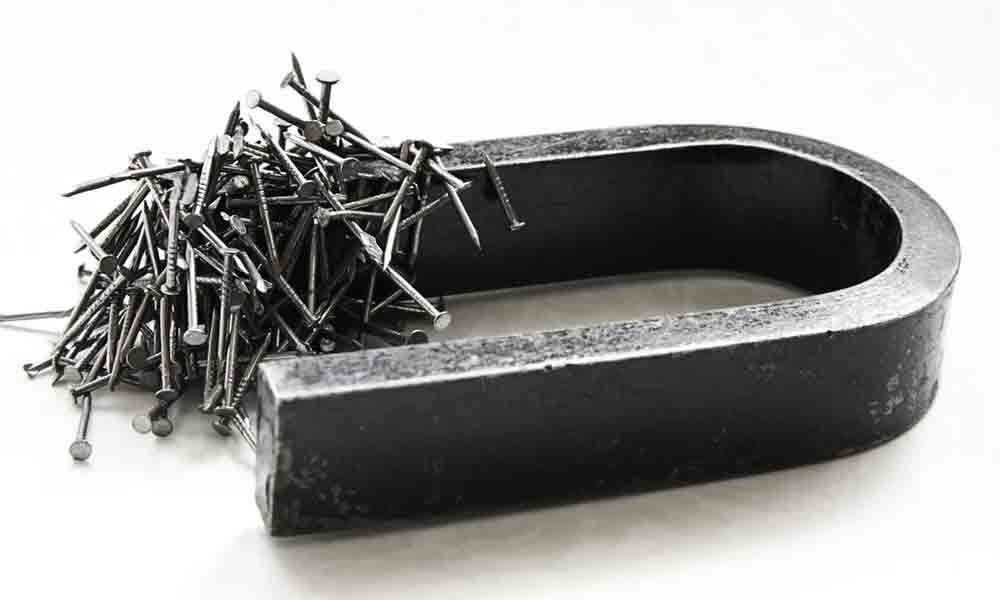About magnets

That’s a great question and one that you just might have to see for you to really understand.
That's a great question and one that you just might have to see for you to really understand. Be sure to do the science projects below to learn how and why magnets work. All magnets have the ability to attract other magnets or magnetic objects (such as iron and some other metal objects). But a magnet doesn't necessarily have to touch a magnetic object for the object to be attracted to it. Try this experiment to learn why.
What you need: Plastic or wooden ruler, Paperclip, Two or more different magnets, Notebook, Pencil
What you do: Line the paperclip up along the end of the ruler so that one side of the paperclip is at the ruler's zero mark. Place one magnet at the other end of the ruler. Now, hold the ruler in place with one hand and slowly slide the magnet toward the paperclip with your other hand. When the paperclip attaches to the magnet, stop moving the magnet.
Look at where the magnet was at along the ruler to see how far apart the magnet and paperclip were when they came together. (You might need to try it a few times before you are sure!) Write down the distance in your notebook. Draw a picture of the magnet that you used so you will remember which one it was.
Do steps 1-4 again with each of the magnets that you have.
What happened: All magnets have a magnetic field – an area around a magnet where its magnetism affects other objects. By measuring how far the magnet was from the paperclip when they become attached, you were finding the length of the magnetic field. Stronger magnets can generally attract magnetic materials from a farther distance than weaker magnets can. Based on that fact and the results you wrote in your notebook, which of your magnets was the strongest? Which one was weakest?
















